Navigating the “Gross and Messy Middle” to Create Something Beautiful: Interview with Artist, Taxidermist, and Sisal Creative Founder, Becca Barnet
This week’s interview is with Becca Barnet, the founder of Sisal Creative, a multi-disciplinary team of artists for hire. Becca and her team focus on creating site specific work for their clients that blends fine art with immersive objects and interactive experiences - think everything from a large scale mosaic at a children’s hospital to taxidermy repair and redesign of the user experience at the Charleston Museum’s Bunting Natural History Gallery. In addition to her work at Sisal, Becca was featured as a contestant on season 3 of NBC’s Making It, a craft competition series hosted by Amy Poehler and Nick Offerman, in 2021.
Becca attended the Rhode Island School of Design where she studied illustration, in addition to training in taxidermy repair at the Missouri Taxidermy Institute. It was through formative experiences in her work after college, working at the Museum of Natural History in New York on traveling exhibits, and assisting a blacksmith as a project manager in Greenpoint, that she realized she had a passion for making art that was site specific, education inspired, and didn’t have her name on it. Eventually Becca moved back to her native South Carolina where she put down roots in Charleston and began doing whatever it took to get her name out there with potential clients and opportunities. During that time, she did pet portraits, student tutoring, worked in retail, and taught art classes on the side as she worked to get her foot in the door. A game changing opportunity finally arrived when she was asked to work on the South Carolina Aquarium's “Journey to Madagascar" exhibit. After the project finished, Becca felt ready to go all in on making her dream career happen and formally launched Sisal Creative in 2012.
Nearly 13 years later, Becca and Sisal have continuously morphed to meet the needs of their clients and the times. As she told me, “We’ve had to morph often, but there was never a moment where I thought, ‘I'm not suited for this. I can't do this. I'm quitting.’” It’s a commitment that comes from doing the work she feels she was born to do.
Over the course of the interview we spoke about:
What kept her going during those early years when she was working to build a portfolio and reputation
The necessity of morphing and why she’s never considered quitting
The biggest mental leaps she’s made in learning to deal with the uncertainty that comes with building a business
The tools that help her manage imposter syndrome
What RISD, Making It, and life as an artist have taught her about learning to receive feedback and critiques
The media project she’s excited about next
How would you describe what you do for work?
This is really difficult for me because we do so many different things. I try to have an elevator speech prepared, but it changes every time. I would say that at Sisal Creative, we make corporate artwork that's very brand-specific, site-specific, and celebratory of the stories of the clients that we have. We make anything from pattern wallpaper, illustrations, and custom branding, to large-scale site-specific custom art installations. So really anything you see that is art in a public space and tells the story of the people that we're trying to represent through a visual medium.
I think that was a good elevator pitch.
I try with that one. It's really hard because we also do museum design and fabrication, as well as props and things like that; really anything you need made, we'll make it for you. If we don't know how to make it, we work with an amazing network of collaborators, subcontractors and vendors that we trust. So if we don't make something in-house, we have close relationships with talented craftspeople who we’ll collaborate on the design work, and then have them help us actually bring the concept to life.
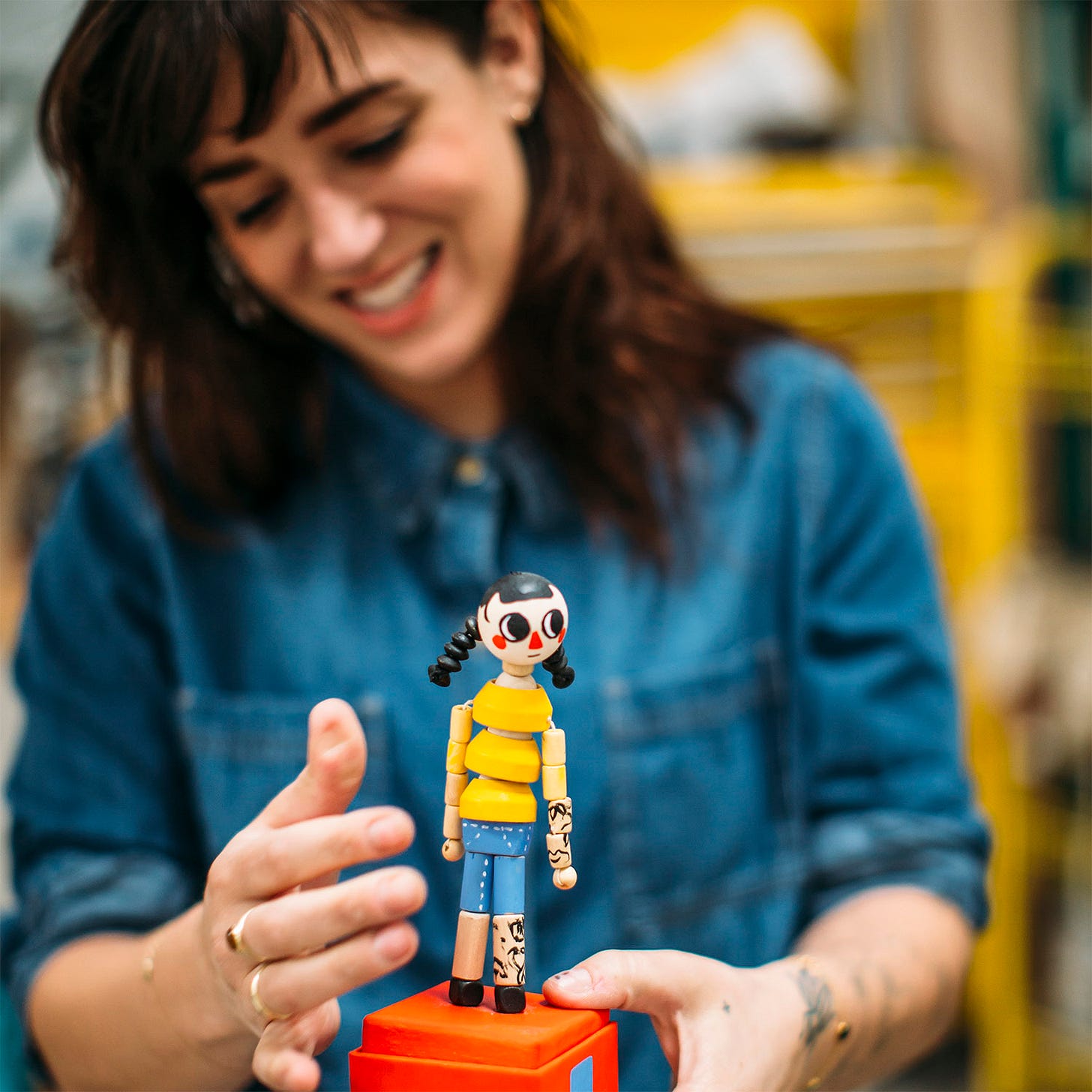
I'm so interested in the path that you took to become what I’ll call a “professional maker of things.” In an interview you did with Shoutout Atlanta, you shared something your dad said to you around that time that you were working to get your name out there with potential clients and doing work for the South Carolina Aquarium’s “Journey to Madagascar” exhibit. When you described your dream job to your dad, he said, “Ok then, make it happen, Becca.” Can you talk more about what helped you make it happen?
I think that I had a lot of amazing opportunities. My grandmother passed away around the time that I was starting my business, and she left me some money, which I used as a nest egg to get started. Now that was putting money into myself and my tools and my studio space, but I realized that I would need to supplement my income with pet portraits, tutoring kids, and teaching classes while I got my name out there.
I'm really lucky in that sense because I know that a lot of people starting out don't really have that kind of parachute, and I never take that for granted. There were a lot of times where I didn’t know if it was going to be a real thing. I’ve often thought of something my Dad told me, and that I’ve generally read about starting a business, which is that you really have to wait 5 to 7 years to feel any kind of financial sustainability. I remember going, “Well, that's too long,” but I'll do my best and try and be patient.
I also never ever gave myself the opportunity to say, “Okay, well, this isn't gonna work.” My “not gonna work” would be that I was destitute and miserable and eating ramen every day. I decided that I was going to go for it even if it looked ugly and messy. One of the things that I love about what I do, especially taxidermy, is that it’s gross and messy in the middle, but at the end, it's beautiful again.
There’s not necessarily an end that I'm referring to with my business, but I think the point is that I can't get anywhere without it being gross and messy and horrible in the middle. Now gross and messy and horrible just looks like I'm not making enough, I'm not producing enough, or I'm not getting enough jobs, and that's when you have to go, “Okay, well, am I attracting the wrong clients? Am I not putting out enough feelers? Am I not making enough cold calls? Am I not busting down enough doors?” You have to weigh that with the idea that you just need that one, maybe two clients that trust you with their wildest vision, who are maybe gonna let you do it on the cheap, but know you will make something awesome. Once you have that in your portfolio, you have a proof of concept that you can do something really cool. I don't want to operate on a shoestring budget for every project, but I was able to get some more significant projects and budgets by doing a few shoestring projects for people that just trusted me, despite not really knowing what I could do. They just said, “You seem organized and articulate. Go for it,” and I ran with those opportunities.
I was definitely scared, annoyed, and frustrated at times, but I also never thought, “Don't do this.” I guess I always thought, “This is for me, it might just not look the way I want it to look right now.”
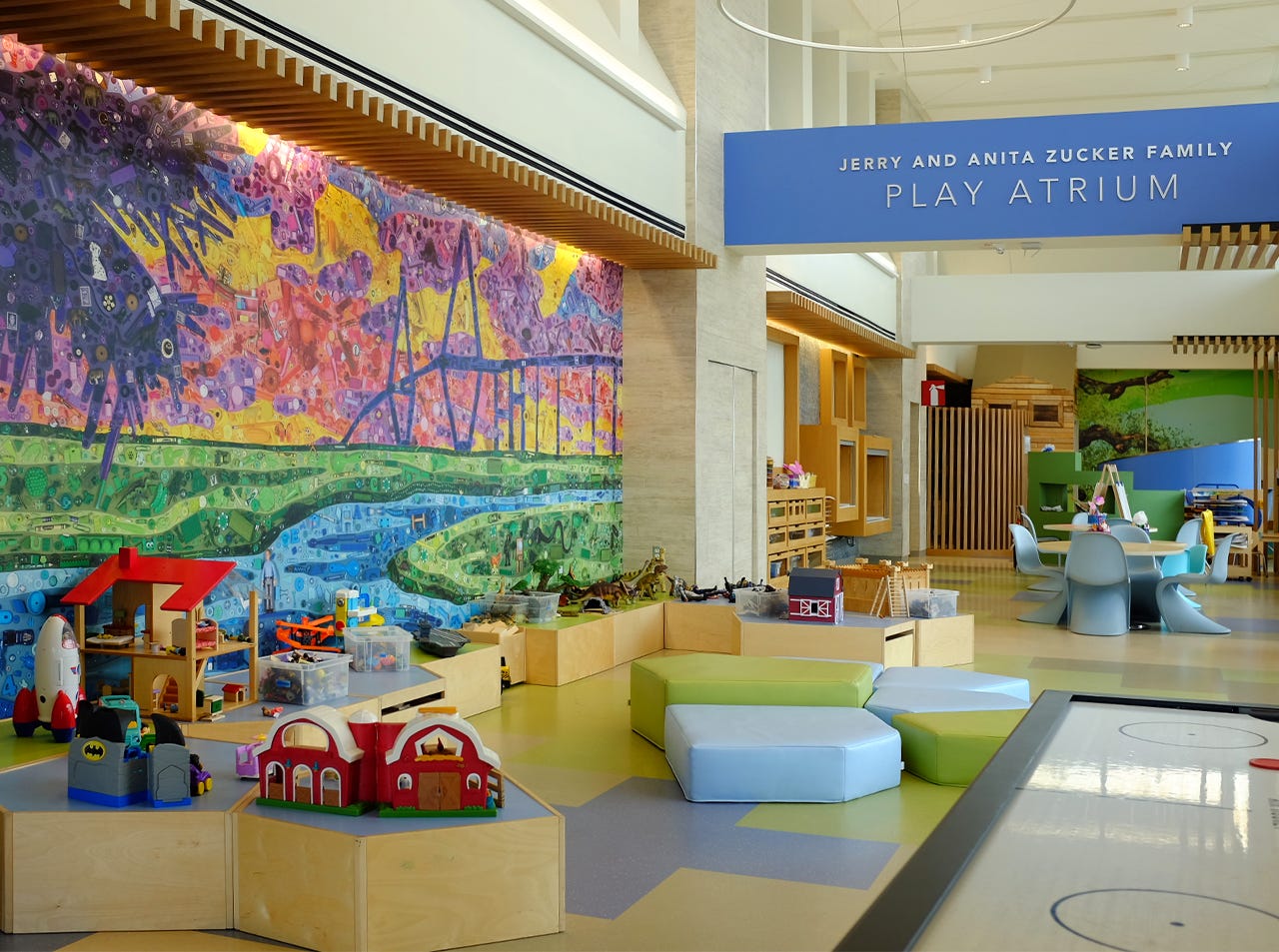
You’ve now been at this for 13+ years, which is not a small amount of time. You mentioned never giving yourself the option to quit, but were there ever moments you came close? If so, what helped you work through them?
I never ever thought, “I'm not doing this anymore,” but I did have the thought at times, “This isn't sustainable. It's going to have to change, because it isn't giving me the financial or the artistic results that I want, so I have to morph.” At Sisal, we have to fit the niche world of art because art is a luxury of the time in which you live. There have been years where we had nothing coming in because it was COVID or the economy wasn’t doing well. Those were times where no one was going to pay for a 40-foot art installation in a lobby. Then there have been times where the economy's been really good, and people are willing to invest in those kinds of art pieces, and then there's been times that they're not. All that to say, we’ve had to morph often, but there was never a moment where I thought, “I'm not suited for this. I can't do this. I'm quitting.” Sometimes that morphing looked like offering classes instead of making big pieces for clients. Sometimes that looked like doing more outreach. Sometimes it looked like switching heavily into design and illustration and branding, rather than doing these big, expensive pieces. I’m always ready to pivot to meet our clients’ needs.
This summer we were incredibly slow to the point where I wanted to pull my hair out, and then we got slammed. You just never know. I’m working 12-hour days right now, and that's great, and I love it, but there were times this summer where I maybe worked four hours a day. When it’s slow, I try to give myself the space to play and experiment, and then get back on the outreach and cold calls and social media. Reinvesting in myself during slow times is the way that I’ve kept things going.
What are some of the biggest mental evolutions you've made in mentally handling that uncertainty over the past 13 years?
Well, I'm in a lot of therapy. My first huge shift, I remember, was deciding to not answer emails after 5 o'clock anymore and just cutting everything off then. If I want to work on something that pleases me after that time, that's fine, but I, as a rule, keep office hours now. That was huge for me, especially coming from RISD, where you stay up all night finishing a piece that you have a day to make, but has to be good enough to have a critique. The shift was, “No, you're not gonna kill yourself anymore over this. You're not gonna lose sleep and pull out your hair over this anymore. It's a job at the end of the day. You're not solving world hunger. You're making art so calm down.”
Another big shift came from learning how to be a boss. Learning how to hire someone, fire someone, work with different people, delegate tasks, train people, and teach them how to ask the right questions, because that's a huge part of the process.
I also had a big unlock when it came to learning how to nail down contracts and proposals. Locking them down so your deliverables are set, your pricing is set, and your payment structure, the responsibilities of each party, and the project milestones are all clear. I think it’s important to be ironclad in the creative field and have those firm boundaries. I happen to work really quickly, so I don't want to penalize myself for working hourly if I work fast. I also don't want the client to suffer if I'm sitting there, and it takes me an extra 4 hours to do something that they think is only going to take a certain amount of time.
So I would say the big jumps for me were not working past 5, learning how to be a boss, sticking up for myself with pricing, and really knowing my worth.
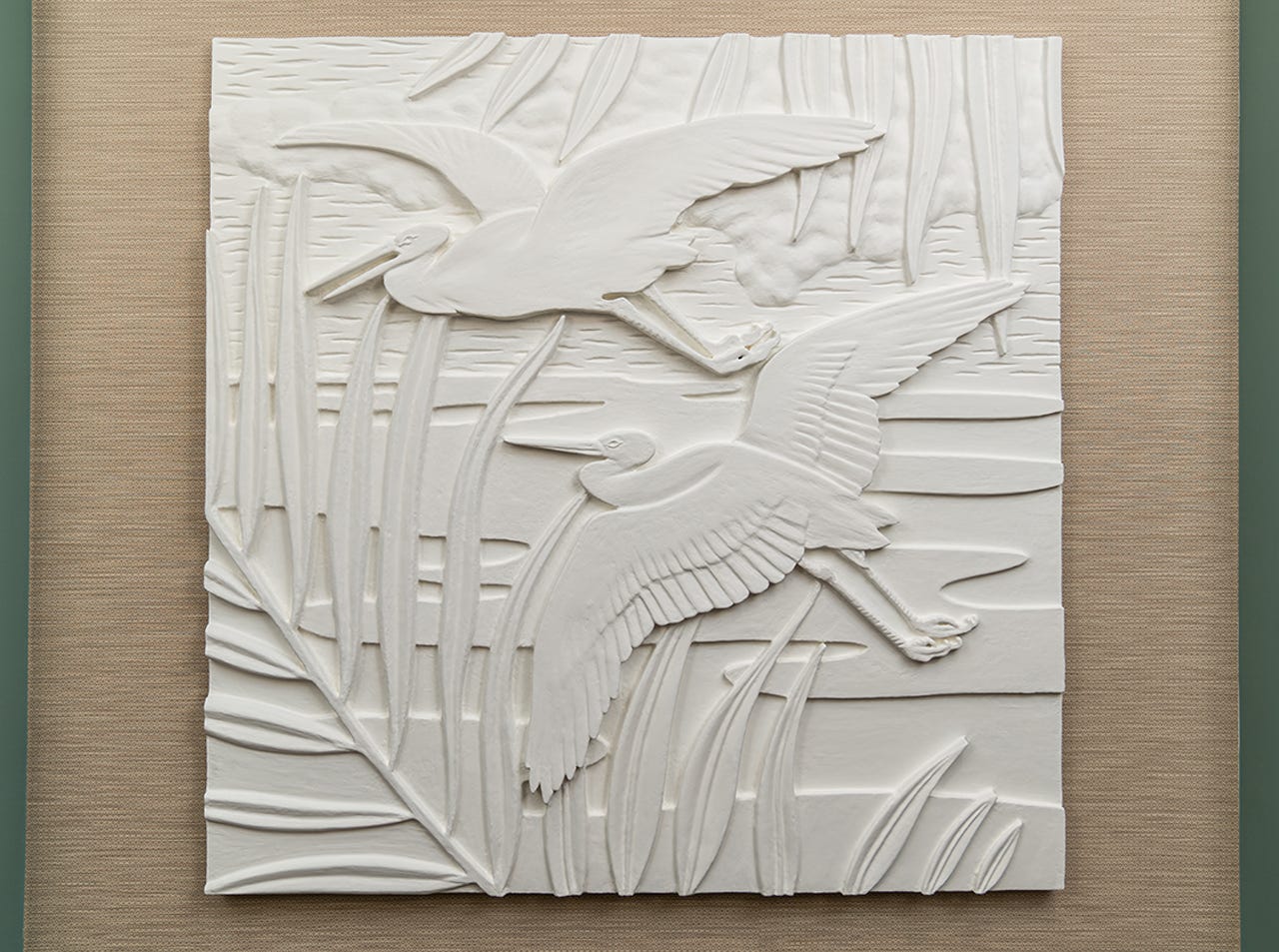
In an interview with CanvasRebel, you talked about how one of the lessons you’ve had to unlearn is imposter syndrome. I resonated with this quote in a big way: “Over the years, impossible amounts of internal pressure and imposter syndrome have become my inner saboteurs. It’s super hard to convince people they NEED custom, (essentially luxury) artwork, and some days I feel that what I want to do/am doing is impossible. It is too easy to convince myself that I don’t deserve any success.” Can you talk more about the tools and mental shifts that have helped you shut down those voices?
Just calm down, tread slowly, and observe. Therapy has helped me a lot, especially with learning how to name that voice in my head. I call mine Barbara. I’ll say, “Barbara, now's not a good time. We're doing this, and I need you to be quiet right now.” There are a lot of times where someone comes in, and they know what they want, and they're kind of aggressive, and I can tell that they both do and don’t trust us to make it happen, meanwhile I’m trying to figure out how to give them a proposal that accurately reflects my time, energy, materials, and team. I think what I’ve learned is that I'm not gonna shrivel up and die if they say no to me anymore. Being okay with people not liking what you do, or saying no to something you proposed, is a huge way to get over those voices. That's not some therapy answer I have. That takes a lot of time and practice.
At the end of the day, if you say yes to 10 small projects that are under $1,000 each, you're gonna be digging your nails into the wall trying to figure out how to do it all. But if you stay patient, and you wait for the right fish, it will come to you, and you'll be working on one or two bigger projects that feel more sustainable, and are more aligned with what you want to do with the business.
When I’m having times where I feel like my business isn't good enough, or “I’m not good enough,” I go back and I look at what we've done. It’s kind of like having “Eye of the Tiger playing” while I look at our portfolio. My screensaver on my computer is a lot of our past projects, but it also has a picture of me from my days at RISD in taxidermy school. I’ll look over at it and think, “You came a long way. Good!” I also think that reminding yourself of why you started is a huge way to get over imposter syndrome. Having that mission statement you can refer back to during those tough moments.
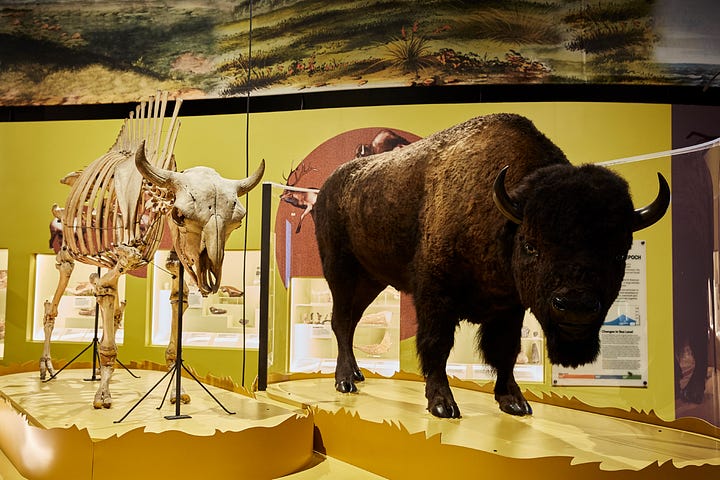
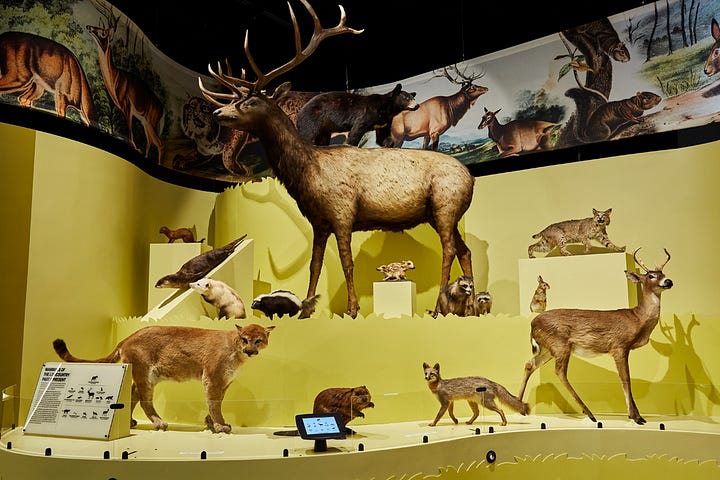
It’s hard to pinpoint an exact answer because I have this blind ambition. I like being scared. I like being in a zone of uncomfortability. I don't know if that's the Museum of Natural History, or my time at RISD, or just my own psychosis or something, but I really like having a little bit of fear that's fueling my fire. Sometimes when I'm the most scared of a project, I’ll say, “I get to do something that freaks me out, and I don’t always get to do that.”
My imposter syndrome always starts with, “You can't do this. You're not good enough,” and then it goes into, “No, but we like this. We're gonna do this, and it's gonna be great.” Asking for help is a huge, huge, thing I’m bad at but makes a world of difference. I will straight up say to my employees, “I’m freaked out by this, but we're gonna figure it out.” I think sometimes that freaks them out because they’re thinking, "You're supposed to be our leader!” But then I’ll say, “We're gonna ask this vendor, talk to this person, get a professional woodworker in here, and we're gonna make sure everything happens and project manage the shit out of this. We're gonna ask for the right amount of help, and it's gonna be okay.” I used to think I had to do it all by myself but no man is an island. You can't do it by yourself.
I have to imagine getting feedback and critique is something you’ve had to get comfortable with over the course of your career, ranging from your time at RISD to working with a broad range of clients and getting judged on live television while competing on “Making It.” What are some of the biggest lessons you’ve learned about being able to receive feedback without letting it derail you?
I think it comes back down to practicing. RISD gave me a lot of opportunities to practice being critiqued and to find some confidence in myself to be able to go, “Well, I did the best I could, and that was the decision I made at the time. It doesn't mean it was right, but it was right for me at the time.”
I think that you have to remember that a critique is someone's opinion, and it doesn't mean that they're right. What I loved about RISD and illustration is that you're charged with making a piece for an assignment. You're charged with making something that is inherently you, and it's your voice, and it's your style, but it also complies to all the criteria that your client needs. You have all these boxes you have to check, but if you had that assignment, versus me having that assignment, it's gonna look completely different. And neither one of them is better or worse. It's just you.
A critique is not a reflection of you as a person. I think a lot of artists come from the perspective of, “This art is mine, and so it is me, and I am it.” I don't really identify with that, and I think that helps me with critiques. When I make something, it's out the door, and it's the client’s baby. They can do whatever they want with it. They can graffiti it, they can take it down, they can have it up for years, they can do whatever. It's not mine anymore to have. You're making art for somebody else, so it's never yours. And if it's never yours, how can it affect you personally?
How are you intentionally crafting your life inside and outside of work? Put another way: what’s your “no directions” path look like today? I’ll add some context on what inspired this question. I think a lot of people assume that I want to know about all the crazy, unconventional stuff that you're doing (and of course I do), but this question is more about how people are intentionally choosing whatever it is they want their life and work to look like. I’m very interested in what it means to intentionally choose.
I think everything is such a choice. I’m not trying to be morbid, but I do like to remember that we never know what’s going to happen, and we could die tomorrow. At the end of the day, I like to ask myself: Was I inherently a good person today? Did I try my best? Was I kind to others? Did I do something for someone else? And then: If I could do something differently, what would I do tomorrow? What would I like to do more of tomorrow?
I could theoretically sell all this shit and go do something else. I do sometimes fantasize about working for Disney because I'm obsessed with Disney. But the truth is, I think that at the end of the day, you just have to be aligned with your choices. If you don't love them, you have the opportunity to choose differently tomorrow, whether that's a whole new thing, or that's something small. If I could do anything tomorrow, it would probably be what I'm gonna do tomorrow, which is hang with my kid, work, and spend time with a friend.
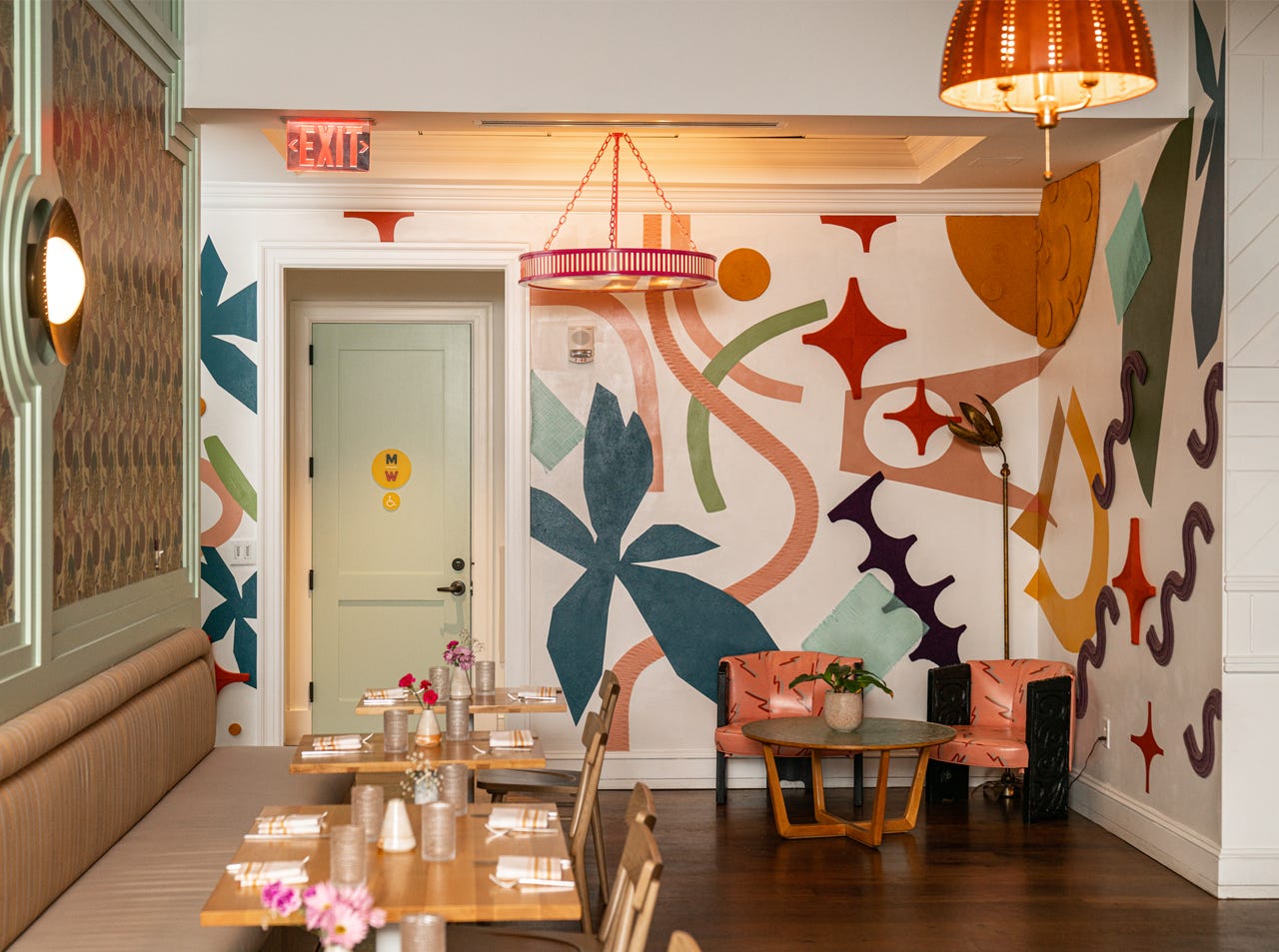
Last one. What’s next for you?
I have a concept for some kind of media where we go interview natural history artists about their jobs, what they do, how they got there, mental health, and what they do for support. I want to give an opportunity to artists that never put their name on anything to have the chance to talk about what they do, why they do it, and how they got there.
In the process, I want to figure out: Why do I want to do this? Why do I want to play with dead animals? Why do I want to preserve things that are being destroyed by nature? Why do I want to make art that doesn't have my name on it? We're traveling to Alaska on Monday to talk to my taxidermy mentor, who's an award-winning taxidermist.
I'm really, really excited. It's a baby of a project that could turn into something really cool. That’s my new side project that I've had in my head for 3 years, and I finally bit the bullet and just said, “it's time to do this, so I'm gonna go do it.”

